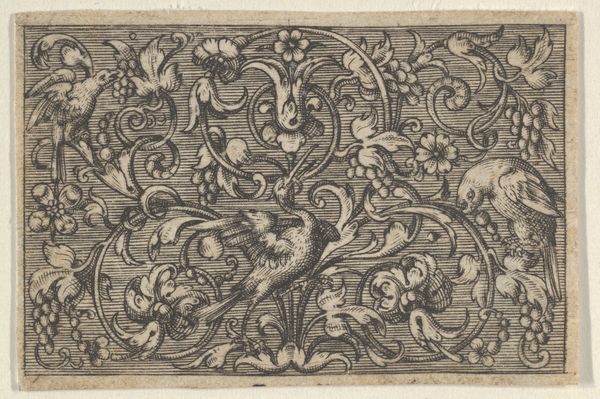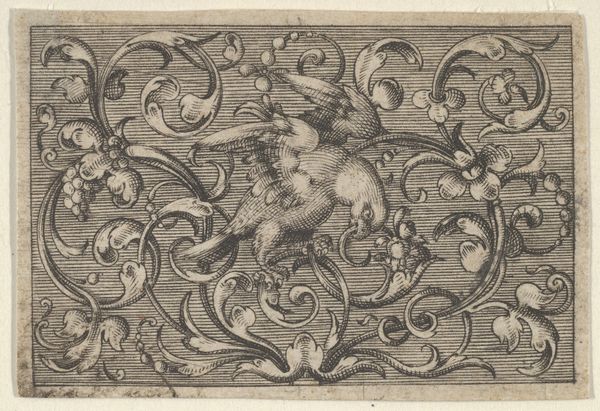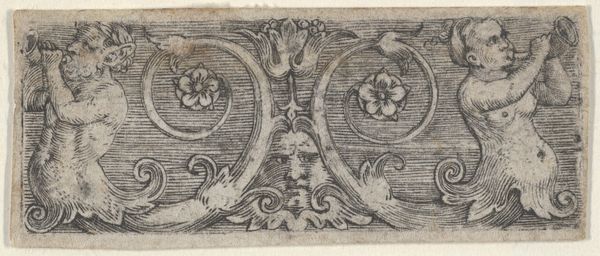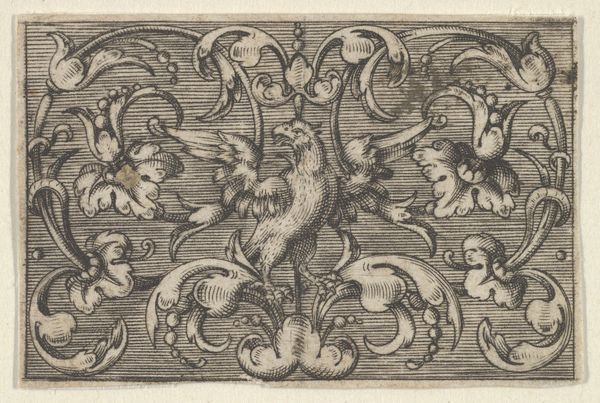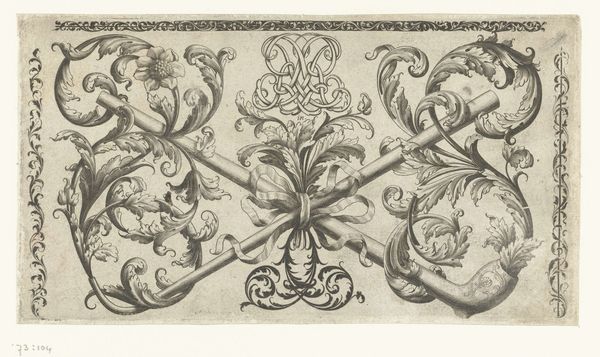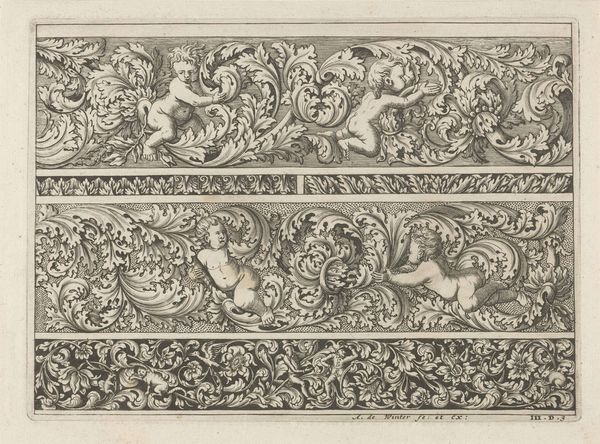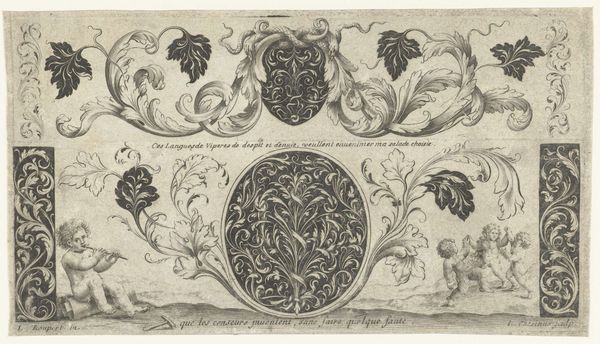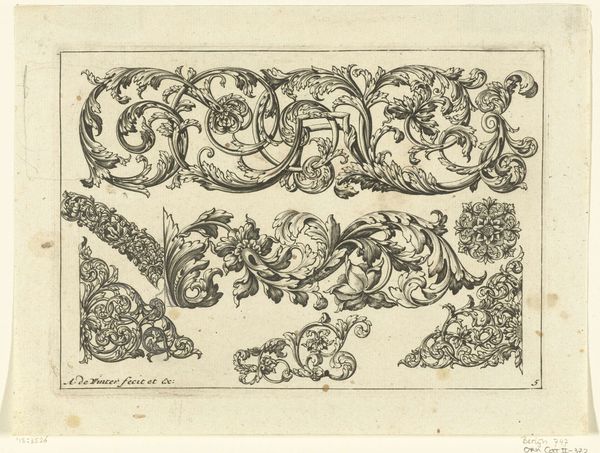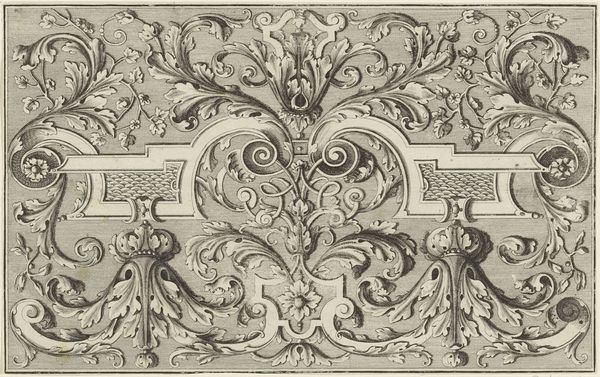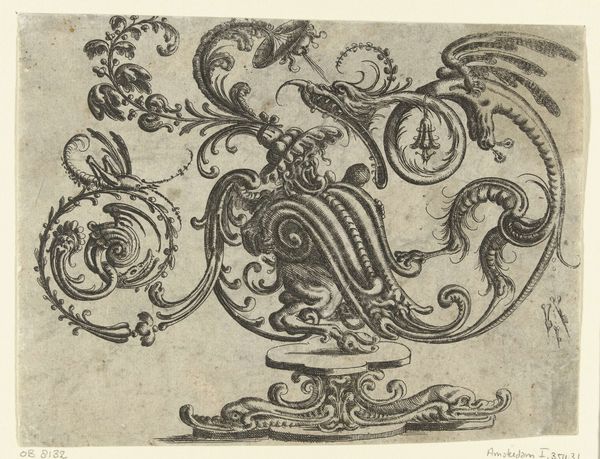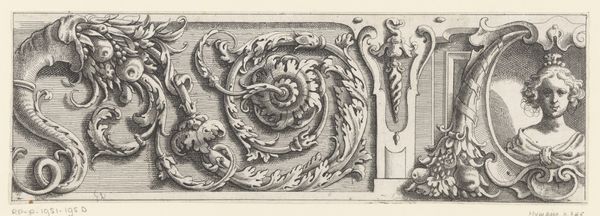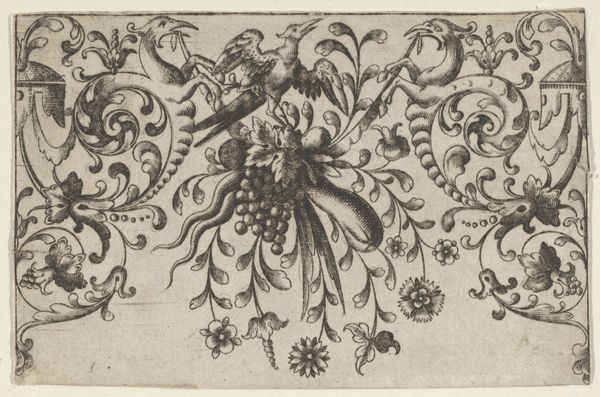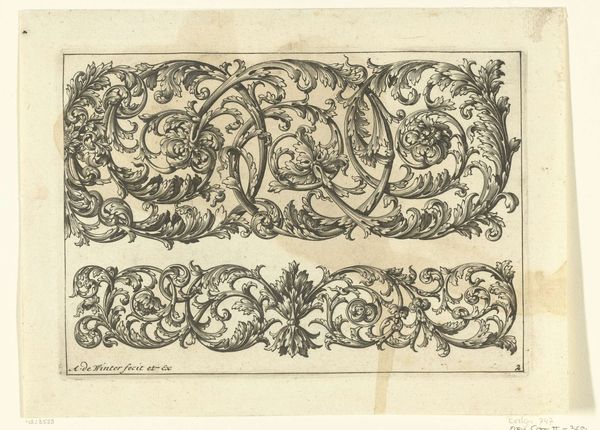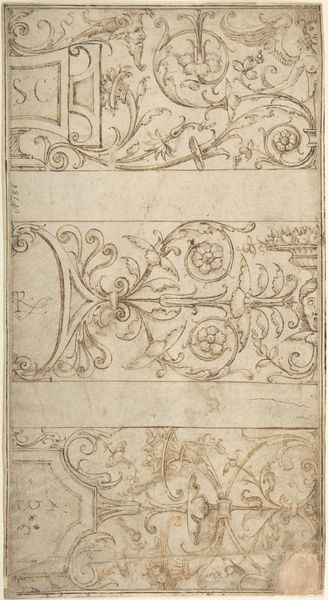
Horizontal Panel with a Bird, from Varii Generis Opera Aurifabris Necessaria 1595 - 1605
0:00
0:00
drawing, print, ink, engraving
#
drawing
#
pen drawing
# print
#
bird
#
flower
#
form
#
11_renaissance
#
personal sketchbook
#
ink
#
geometric
#
line
#
engraving
Dimensions: Sheet: 1 5/16 × 2 in. (3.4 × 5.1 cm)
Copyright: Public Domain
Editor: Here we have Paul Birckenhultz’s "Horizontal Panel with a Bird, from Varii Generis Opera Aurifabris Necessaria," made between 1595 and 1605 using ink and engraving. It reminds me of a complex tapestry; all those swirling lines! What connections can we make with the cultural norms and artistic conventions that influenced this print? Curator: Absolutely. This piece is more than just a pretty decoration; it’s deeply embedded in the societal structures of its time. Prints like these were often used as models for artisans, particularly goldsmiths, reflecting a system where design and craft were intrinsically linked. Do you see the bird at the center? Editor: I do. It seems almost trapped within the design. Curator: Precisely. Consider the bird not merely as ornamentation, but as a symbol appropriated within a patriarchal system. Birds have often represented freedom and the wild, untamed feminine spirit. By confining it within geometric floral patterns, Birckenhultz subtly participates in the symbolic control and aesthetic framing of nature, perhaps even womanhood, within a burgeoning capitalist society. How does this framing resonate with power structures that are still relevant today? Editor: That makes me think about the male gaze, and how women and nature have historically been represented… almost like possessions? I hadn’t considered that the detail of the design might be reflective of broader power structures. Curator: Exactly. Reflecting on this we can analyze who gets to create, control, and consume images like this. This piece invites us to interrogate the relationship between aesthetics and ideology, between nature and its human interpretation. It's about deconstructing historical representation and recognizing its ties to the power imbalances of the Renaissance— and even now. Editor: Wow. Looking at it that way completely changes my understanding of the artwork and historical context of artistic creation.
Comments
No comments
Be the first to comment and join the conversation on the ultimate creative platform.
